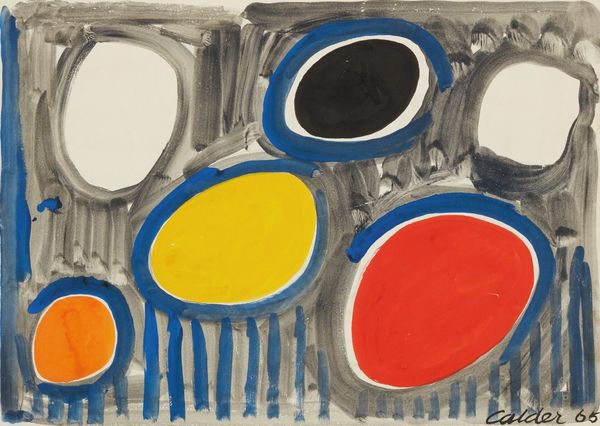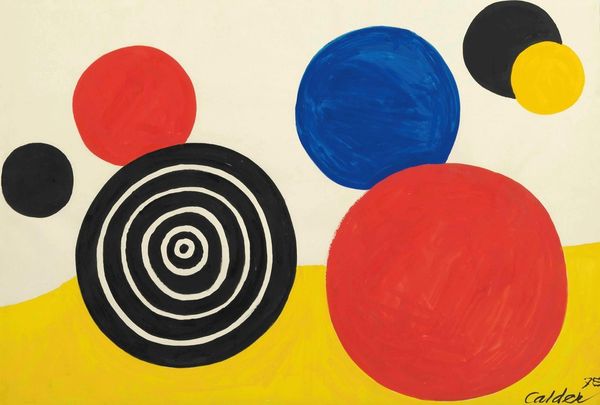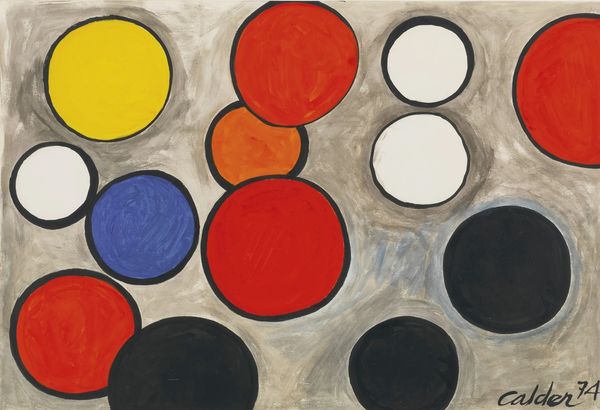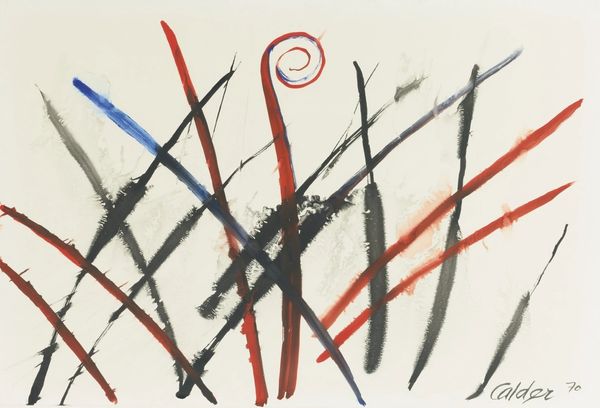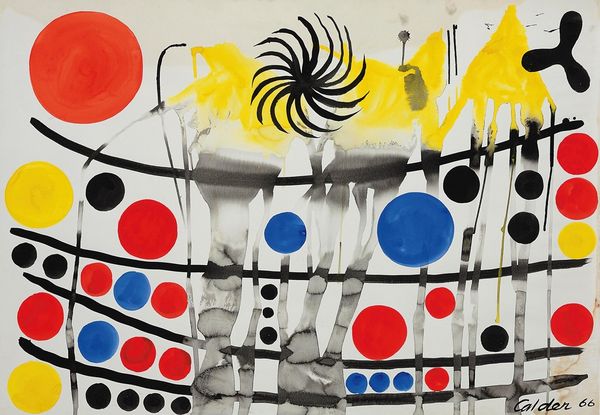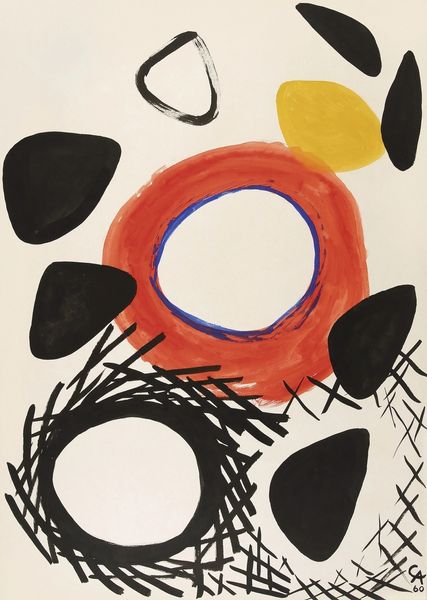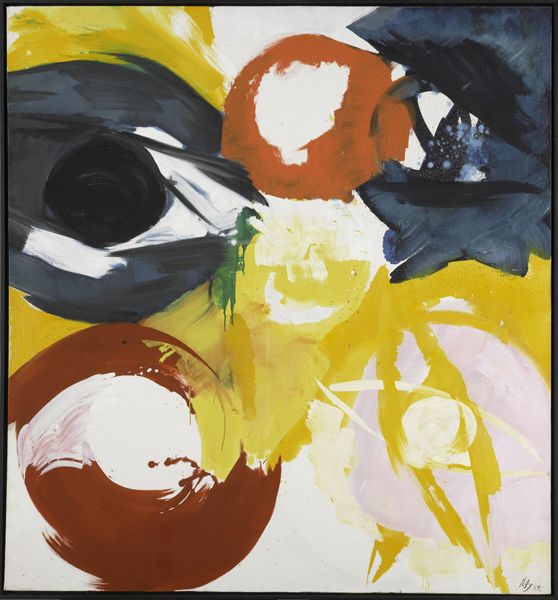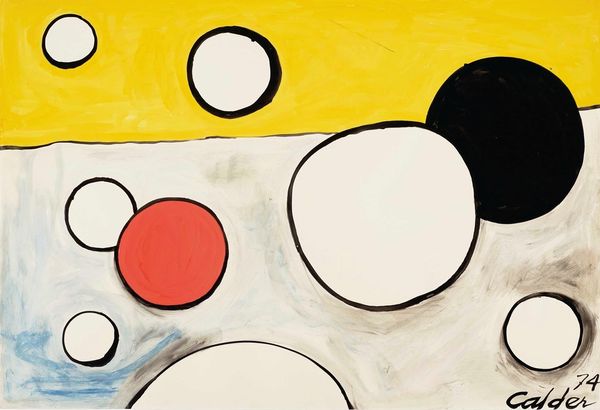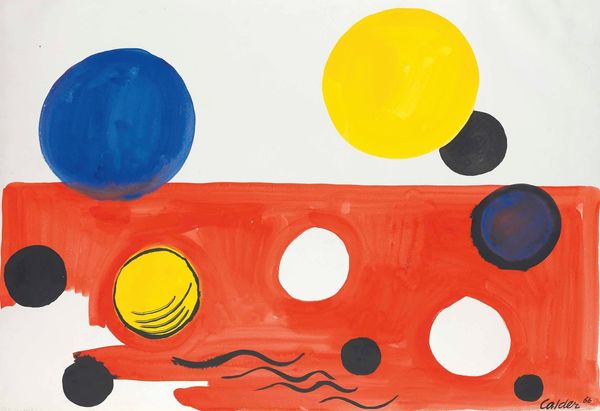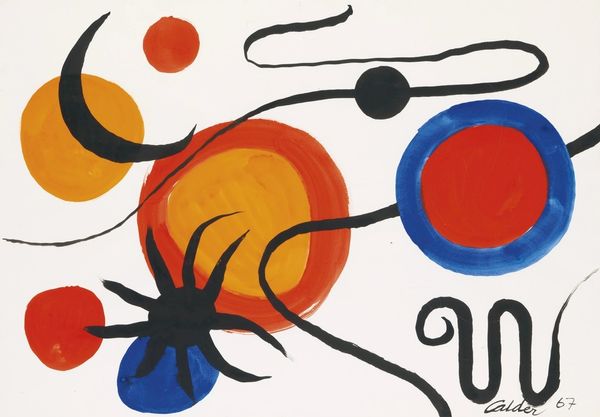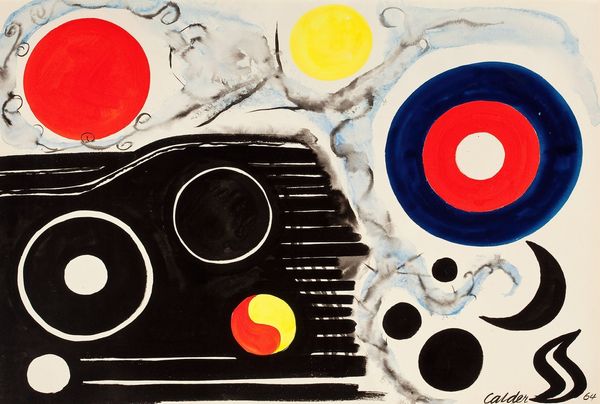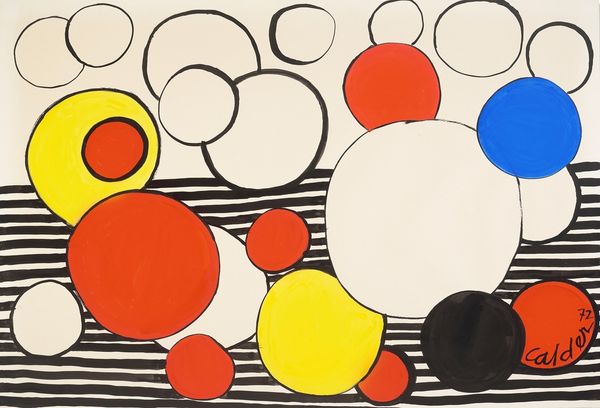
Copyright: Modern Artists: Artvee
Editor: This is Alexander Calder's "ON THE SPITS" from 1966, made with watercolor and ink. I find it so playful, even though it's abstract. What’s your take? Curator: The magic resides in Calder’s method. The immediate availability and gestural potential of watercolor – its portability, lack of preciousness, reliance on simple paper – shifts the focus away from notions of refined artistic mastery. What effect does the material's fluidity, the way he allows the ink to drip and pool, have on your interpretation? Editor: I see how that creates movement. Does it democratize the artwork, focusing on the act of creating rather than the final perfect form? Curator: Precisely. Think about mass production and the blurring lines between high art and accessible design during this period. The mobile, which Calder is most famous for, exists because he challenges assumptions about artistic value, considering form and its kinetic dance, like we see the static shapes performing here. What else do you observe in the marks themselves? Editor: There is intentionality but it also seems random. The materials, being less controllable, allow some chaos in. Curator: Consider too that watercolors require swiftness, precluding overworking; his forms are economical. That choice is inherently about process, about minimizing artistic intervention. Editor: I guess you could say the artwork then becomes as much about his method as about him. Curator: In a way, yes. By examining the choices made about process and materials, we're looking at the very nuts and bolts of artistic production, which revalues what we consider “art.” Editor: I hadn't really considered the 'how' this deeply, focusing more on subject. It makes you wonder what was on his mind while choosing each medium. Curator: Indeed. Paying attention to his handling shifts focus onto the social aspects of creation and experience too.
Comments
No comments
Be the first to comment and join the conversation on the ultimate creative platform.
